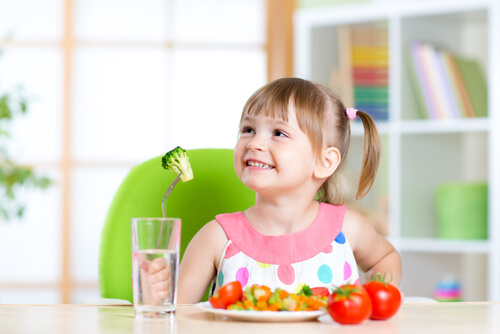Without realizing it, being busy at work or doing activities every day sometimes makes parents pay less attention to choosing healthy food sources for children.
For this reason, most children are very fond of buying unhealthy snacks because they do not understand the side effects.

Healthy food sources of fat for children
Nearly 60 percent of the human brain consists of fat. That is why, fat is one of the important molecules that should be in a healthy food source for children.
Omega 3 fatty acids, for example, can help develop the brain in infants and children.
Even though it’s needed in adequate amounts, that doesn’t mean you can give too much fatty food.
It is important to know that fats are divided into two major groups, namely good fats and bad fats.
Food sources with good fat content include nuts, avocados, olive oil, canola oil, seeds, fish, and eggs.
Various types of good fat sources have a fairly high unsaturated fat content, so they are useful as nutritious food for children.
In contrast to food sources of bad fats which consist of trans fat and saturated fat, including fried foods, coconut milk, fast food, and packaged food.
Food sources of vitamins and minerals
In addition to providing nutritious food sources containing macronutrients for children, providing micronutrients is no less important. Children’s minerals and vitamins are a source of micronutrients which must also be present in their daily diet.
Just be clear, because vitamins and minerals help support brain function, organ development, central nervous system, and muscles. Various choices of food sources that you can give to children include vegetables, fruits, animal foods, tempeh, tofu, and nuts.
Indeed, there are many sources of vitamins and minerals that can meet the daily nutritional needs of children. Coupled with the many types of vitamins and minerals, thus increasing the variety of food choices.
Here are some types of food sources of vitamins and minerals that can be processed as a child’s diet:
Avocado
Banana
Melon
Green vegetables (such as broccoli)
Orange juice
Pawpaw
Chickpeas and long beans
Potatoes with skin
Tomato
Fish, clams and oysters
Low or non-fat dairy products
Nuts (including almonds, kidney beans, peas, peanuts, and soybeans)
In fact, in some cases, giving children appetite enhancing vitamins can help increase appetite for children who have difficulty eating.
Here are important rules that parents must understand:
- The more various types of food, the more nutrition you get
If you’re shopping for healthy groceries for kids, don’t buy the same ingredients.
The more variety of food your little one consumes, the more nutrients he will get.
The reason is, there is no most perfect food that can meet their nutritional needs.
In addition to meeting their daily nutritional needs, combining various variations of the food menu also prevents boredom in your little one.
Because if you are already bored, the child might even strike or be lazy to eat.
So, try to buy and prepare different food ingredients every week so that the child’s food menu is always different.
- Familiarize children to have breakfast every day
Breakfast is very important because it contributes some energy to support children’s activities since the morning.
Especially because starting in the morning, children already need a lot of energy to be active and study at school.
So, what happens when a child goes to school with an empty stomach and growls?
Instead of being more focused when studying, children may find it difficult to concentrate and absorb lessons because their bodies are weak.
In addition, breakfast also helps provide a little energy reserve before it is fully charged at lunch time for children.
If necessary, you can also provide your child’s school supplies to fill his stomach while preventing him from snacking carelessly when he is hungry.